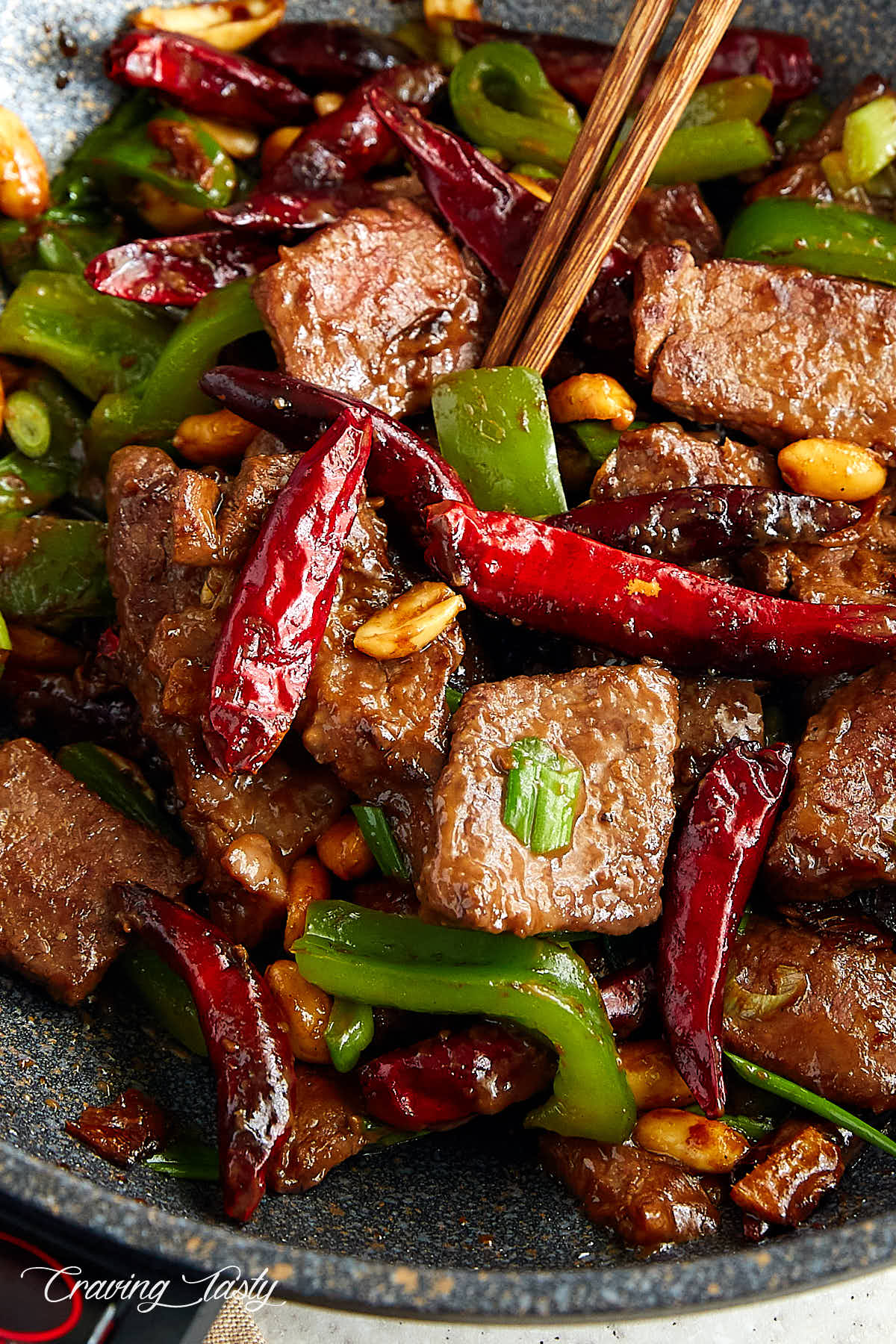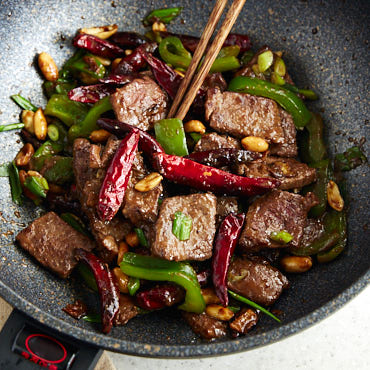What is Kung Pao Beef?
Kung Pao Beef is a westernized version of the classic Szechuan dish called Kung Pao Chicken. Interestingly, many sources I’ve encountered note that Kung Pao Chicken is far more famous and popular outside of China than it is in the country that invented it. The dish features a full range of tastes and aftertastes: peppery hot and spicy, savory and slightly sweet and sour. It is said that Kung Pao Chicken was a favorite dish of a Szechuan governor during the Ch’ing dynasty (1644–1911), after whose official title, ‘Kung Pao’, the dish was named. While I’ve been enjoying spicy food for a long time, Kung Pao is something I became fond of only recently. The reason for that is how this dish was made. Overly sticky, unnecessarily sweet and bland is how I remember Kung Pao that I tried at local Asian food places. Are we, westerners, supposed to like food like that?
About this recipe
Thankfully, it all changed when I tried Bee Yin Low’s Gong Bao Ji Ding (Kung Pao Chicken) recipe published in her Easy Chinese Cooking book. I’ll admit, I haven’t had a chance to travel to China and experience authentic food there, but that Kung Pao Chicken blew me away. I enjoyed every last bit of it, making it over and over again in the following weeks, until I finally satisfied my cravings. This Kung Pao Beef recipe is based on Bee’s original Kung Pao Chicken and the Szechuan Chicken recipes that I enjoyed. And let me tell you, the result is absolutely fantastic!
Tips and tricks for making kung pao beef
Following Szechuan cuisine traditions (that’s why I think of this recipe as traditional) I am using Szechuan peppercorns for flavor and that numbing feeling, as well as hot pepper oil for heat. Traditionally, Kung Pao dishes are served with lots of dried red chilies, but they are not necessarily the source of heat. If you follow my recipe, they won’t add much heat, if any. For that to happen you would need to break them and release the source of heat, the seeds, into the food. We won’t do that. We will keep them intact and stir-fry gently, without breaking them. You can also cut them in half and de-seed prior to cooking, but I find that hardly necessary. Another mandatory attribute of Kung Pao Beef dish is roasted peanuts. Lot’s of them. That toasty, nutty flavor adds complexity, and the crunchy texture adds a nice contrast to the tender beef. However, if necessary for health reasons, you can skip this ingredient. I find stir-fried vegetables a very welcome addition to King Pao Beef. My favorite ones are green bell peppers. But I vary them, from green beans to snow peas, to asparagus and many other. You can’t be wrong here. Just use whatever you like. A dish always tastes best when it’s made of ingredients that you like.


